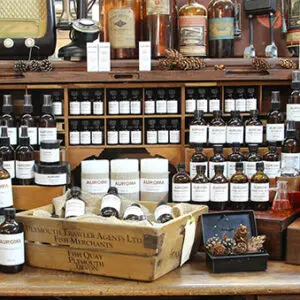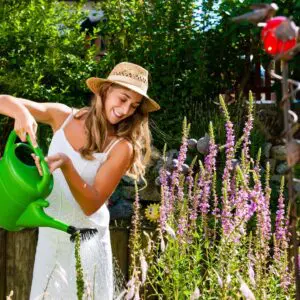Manuka Essential Oil
$39.58 – $103.79
| Botanical Name: | Leptospermum scoperium |
| Geographic Origin: | New Zealand |
| Method of Farming: | 100% Pure – Conventional |
| Method of Extraction: | Steam Distilled |
| Part of Plant: | Leaves |
Profile
Leptospermum scoperium is extracted from a small bushy native shrub that grows wild and abundantly in New Zealand. It likes areas of acidic and low nutrient soils and grows well in areas with sand dunes and mountains. The branches and leaves are covered in silky white hairs which release essential oil when rubbed. The oil is steam distilled from the leaves and twigs. Manuka Essential Oil is a clear yellow liquid with a distinctive, spicy, herbaceous, and fresh aroma.
Some researchers indicated that Manuka may be twice as effective as Australian Tea Tree oil against some bacteria (staphylococcus and streptococcus).
FACT: Manuka oil has been extensively used for generations in New Zealand for its antimicrobial properties. In years gone by it was renowned for its use as a tea substitute by sailors visiting Aotearoa, hence the name ‘tea-tree’ became known, although Manuka is quite different from Tea-Tree.
Additional information
| Weight | N/A |
|---|---|
| Dimensions | N/A |
| Select Size | 1/3 fl oz (10ml), 3.38 fl oz (100ml) |
AUROMA QUALITY
AUROMA Essential Oils are the highest quality essential oils available in the world today. Each oil is from an individual farmer and from a particular year’s harvest. As AUROMA knows each of the Farmers, they guarantee the authenticity of each oil. Just to be certain, they analyze each oil using the latest state-of-the-art GC-MS technology, which can detect impurities to one part per billion. Yes! AUROMA represents the best there is in Essential Oils. We can supply the following documentation: Certificates of Analysis and Safety Data Sheets (SDS)
To meet the stringent demands of the professional aromatherapist, AUROMA has drafted the following seven requirements that an essential oil needs to meet so it can be used with confidence:
- BIO-TYPE: Not only does an oil have to come from a defined botanical species, but from a particular genetic strain.
- CHEMO-TYPE: The same botanical species can often produce completely different constituents.
- GEO-TYPE: Oils from a particular area are often of superior quality. Examples are Rose Oil Bulgarian or Sandalwood East Indian.
- COMPLETE OR WHOLE: The oil should come from a single distillation and should not be rectified.
- WILD OR ORGANIC: Where possible, AUROMA always selects the wild growing plants for distillation. When wild types are not available, AUROMA commissions farmers who do not use pesticides or chemical fertilizers. Certified Organic options are available.
- EX STILL: AUROMA distills small lots of expensive oils in-house and advises farmers on distillation methods.
- ANALYYSIS: Oils are tested by AUROMA in Australia with the most advanced state-of- the-art equipment in the world.
USES
- In a Diffuser: Bring the Outdoors Indoors. Using a diffuser with an Essential Oil or Blend is an easy way to make your space smell wonderful, while using aromatherapy to revitalize and purify your indoor space. Using a diffuser with your favorite Essential Oil or Blend to promote a sense of focus while studying or reading. The word Manuka comes from the Maori term meaning nervousness or anxiety.
- In Skin Care: The properties of Manuka have long been known and used by the Maoris and early European settlers to New Zealand. It was most often used to treat skin problems, like acne, skin eruptions, eczema, cuts and abrasions, dandruff and oily skin. See “Cautions.”
- In a Hand Bath: When you experience tired and aching hands, select a carrier oil such as grapeseed, sweet almond, hazelnut, or sesame – to dilute the Essential Oil or Blend. Add the oils to a basin of warm water and soak your hands for 20 to 25 minutes. See “Cautions.”
- In Foot Care: It has been reported that Manuka is effective for athletes foot, body and foot odor. See “Cautions.”
- For Children or the Elderly: Manuka has a strong natural anti-bacterial quality like Australian Tea Tree. It can be used with all ages, from infant to elderly. See “Cautions.”
- In Years Gone By: . In years gone by Manuka was renowned for its use as a tea substitute by sailors visiting Aotearoa, hence the name ‘tea-tree’ became known, although Manuka is quite different from Tea-Tree.
BLENDS WITH
Bay Leaf, Bergamot, Black Pepper, Cajuput, Cedarwood, Cinnamon, Clove, Ginger, Juniper, Lavender, Lavindin, Nutmeg, Peppermint, Rose, Rosemary, Sandalwood, Thyme, Vetiver and Ylang Ylang.
Whenever you use Essential Oils or 100% pure Essential Oil Blends on the skin, they should be diluted in a vegetable oil. However, always check for skin sensitivity before applying the finished product to the body. See “Cautions” below.
Suggested Dilution Rates follow:
- 10ml Base Product: A 1% dilution requires a total of 2 drops essential oil, or a pure blend, 2%=4 drops, 2.5%=5 drops
- 50ml Base Product: A 1% dilution requires a total of 10 drops essential oil, or a pure blend, 2%=20 drops, 2.5%=25 drops
- 100ml Base Product: A 1% dilution requires a total of 20 drops (1ml) essential oil, or a pure blend, 2%=40 drops (2ml), 2.5% 50=drops (2.5ml)
- 1Ltr Base Product: A 1% dilution requires a total of 200 drops (10ml) essential oil, or a pure blend, 2%=400 drops (20ml), 2.5%=500 drops (25.ml)
Please ensure that the total number of drops does not exceed the dilution ratio. For example: 2.5% dilution = 1 drip Geranium, 2 drops Palmarosa & 2 drops Mandarin diluted in 10ml Jojoba Oil. Total drops = 5
CAUTIONS
Manuka Oil is non-toxic. It is considered non-irritating and non-sensitizing to the skin. (Bataglia S. The complete guide to aromatherapy. The International Centre for Aromatherapy, Brisbane, Australia, 2nd Edition, 1997, AUS)
The Aromatherapy Place does not recommend ingesting essential oils unless a specific dosage instruction is given to a consumer by a qualified medical practitioner.
Do not apply directly to skin. May case skin irritation in some individuals. Always dilute with a carrier oil. A skin test is recommended prior to use on the skin.
Keep out of reach of children. If you are pregnant, nursing, taking medication, or have a medical condition, consult a health professional prior to use. Keep away from eyes and mucous membranes.
Please check with a professional for safe essential oils to use with children or the elderly. Do not use essential oils on a child younger than two years without professional advice.
STORAGE
We recommended that Essential Oils or 100% pure and natural Blends be stored in amber or cobalt blue glass containers to maintain freshness and attain maximum shelf life. Keep away from excessive heat and light. A bathroom, bedroom or kitchen cabinet should be a good storage location.












